This post may contain affiliate links. Please read our disclosure policy.
Make a pizza just for you with this easy and flavorful Personal Pizza Dough recipe. Designed for one or two people, this dough creates the perfect base for your favorite toppings. Simple to make and endlessly versatile, it’s your go-to recipe for a delicious homemade pizza!
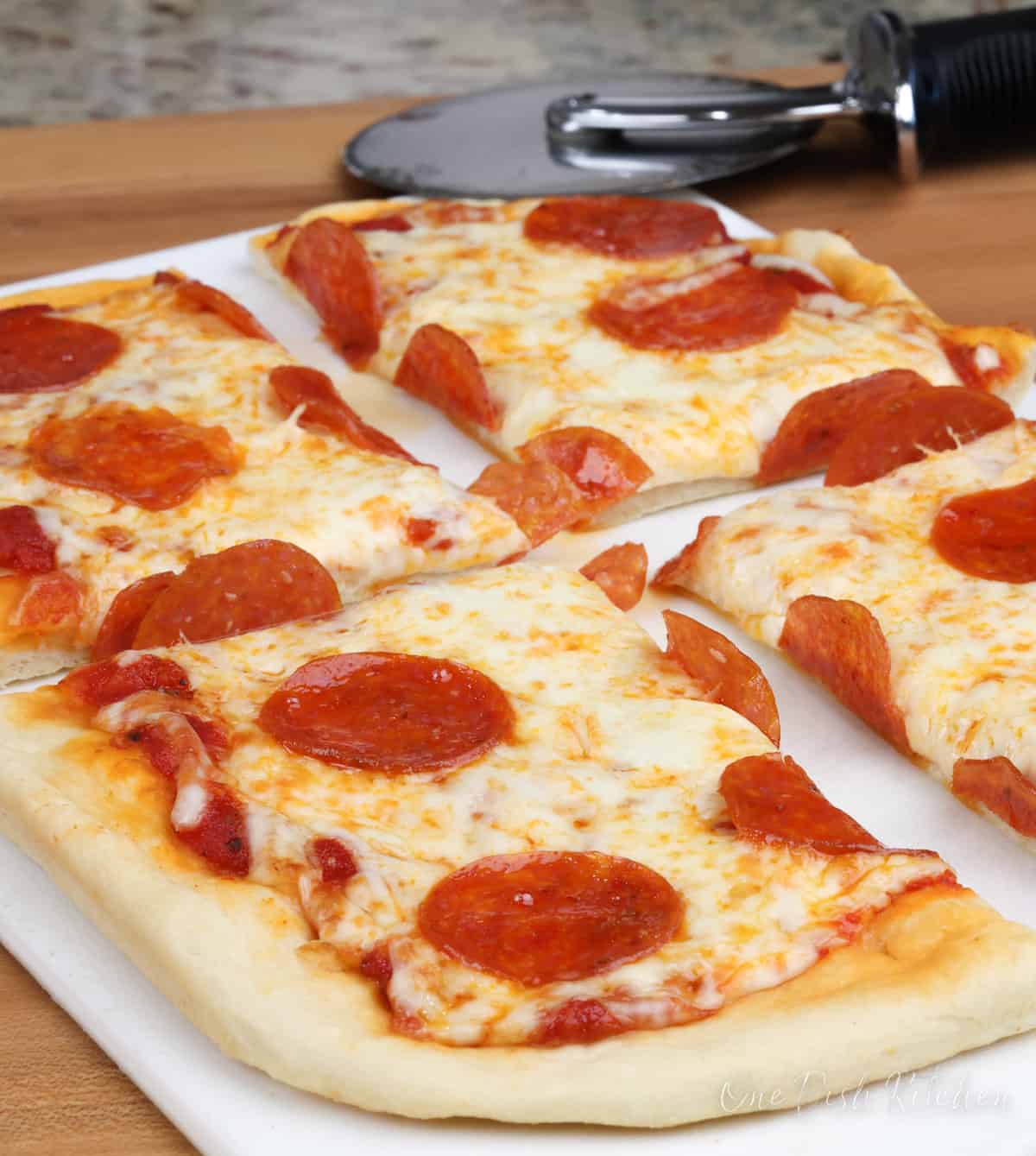
Create a mouthwatering pizza with this easy small batch pizza dough recipe. Add a rich, tangy pizza sauce and pile on your favorite toppings for a flavorful and satisfying pizza meal. Pair your pizza with a crisp green salad dressed in a zesty vinaigrette, and finish your meal with a sweet treat like buttery lemon bars or decadent peanut butter bars.
Table of Contents
Why You’ll Love This Recipe
- Customizable Crust: Whether you prefer a crispy thin crust or a soft, chewy base, this dough works beautifully for both.
- Homemade Taste: Say goodbye to bland store-bought crusts—this recipe delivers rich, fresh flavor you can only get from homemade dough.
- Beginner-Friendly: Simple steps and clear instructions make this recipe perfect for all skill levels.
- Easily Doubled: Making pizza for two? This dough recipe can easily be scaled up for an extra pizza.
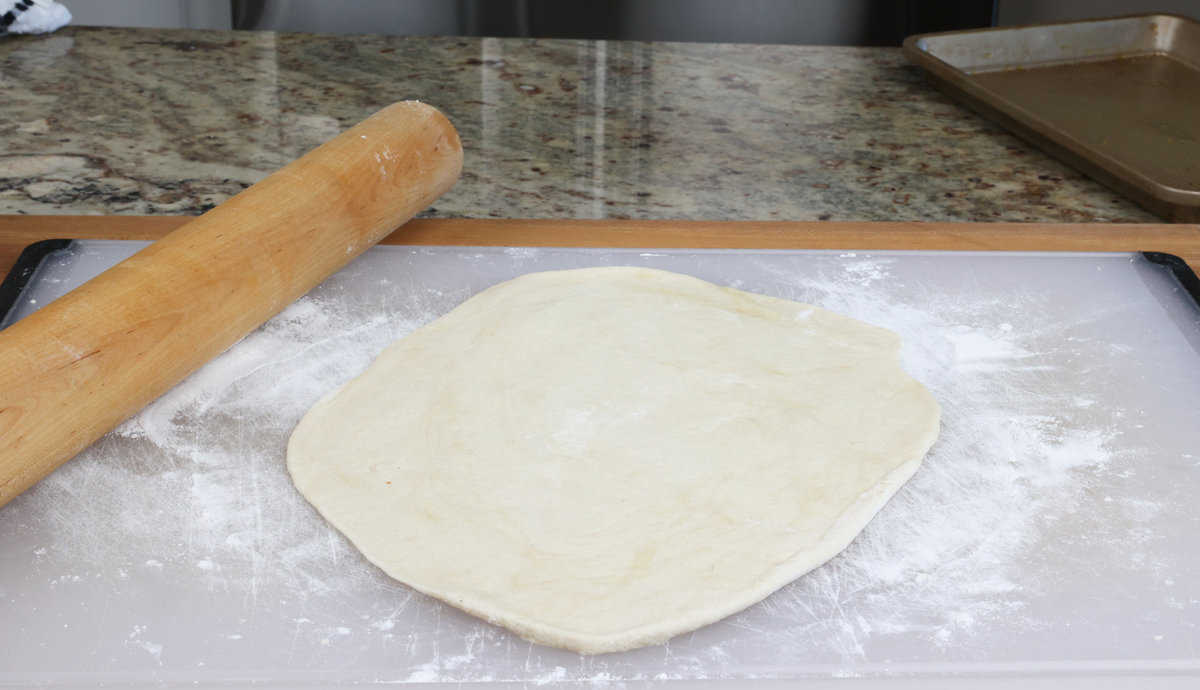
Ingredients
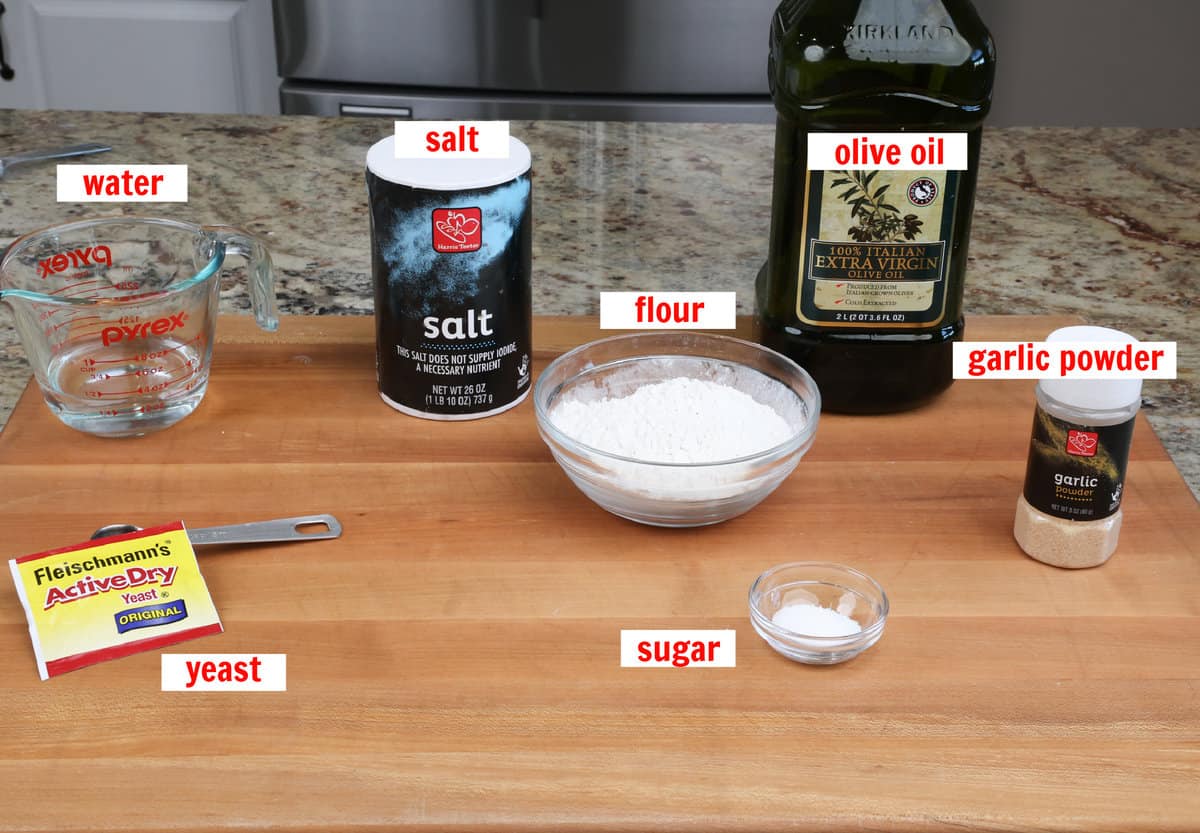
If you have any ingredients leftover from this individual pizza dough recipe, check out our Leftover Ingredients Recipe Finder.
- Yeast: The key to great pizza dough. Use active dry or instant yeast—instant yeast like Platinum Yeast from Red Star is my go-to for convenience, while Fleischmann’s Active Dry Yeast is another solid choice. Check the “best if used by” date to ensure freshness. Leftover yeast? Use it in a small loaf of French Bread.
- Water: Use 1/3 cup of warm water between 100°F and 110°F to activate the yeast. Avoid water hotter than 130°F, as it can kill the yeast.
- Flour: All-purpose flour works well, but for a chewier crust, try bread flour.
- Sugar: Feeds the yeast and helps tenderize the dough for that perfect soft yet crisp texture.
- Salt and Garlic Powder: Enhance the flavor of the crust. Skipping these can result in bland dough.
- Olive Oil: Adds richness and depth. Use extra virgin olive oil for its authentic flavor and higher nutrient content.
The Right Yeast For Your Personal Pizza Dough
You have two excellent yeast options for this pizza dough recipe. Here’s what to know about each:
- Active Dry Yeast: Requires activation. Dissolve it in warm water (100°F to 110°F) before mixing it with the flour.
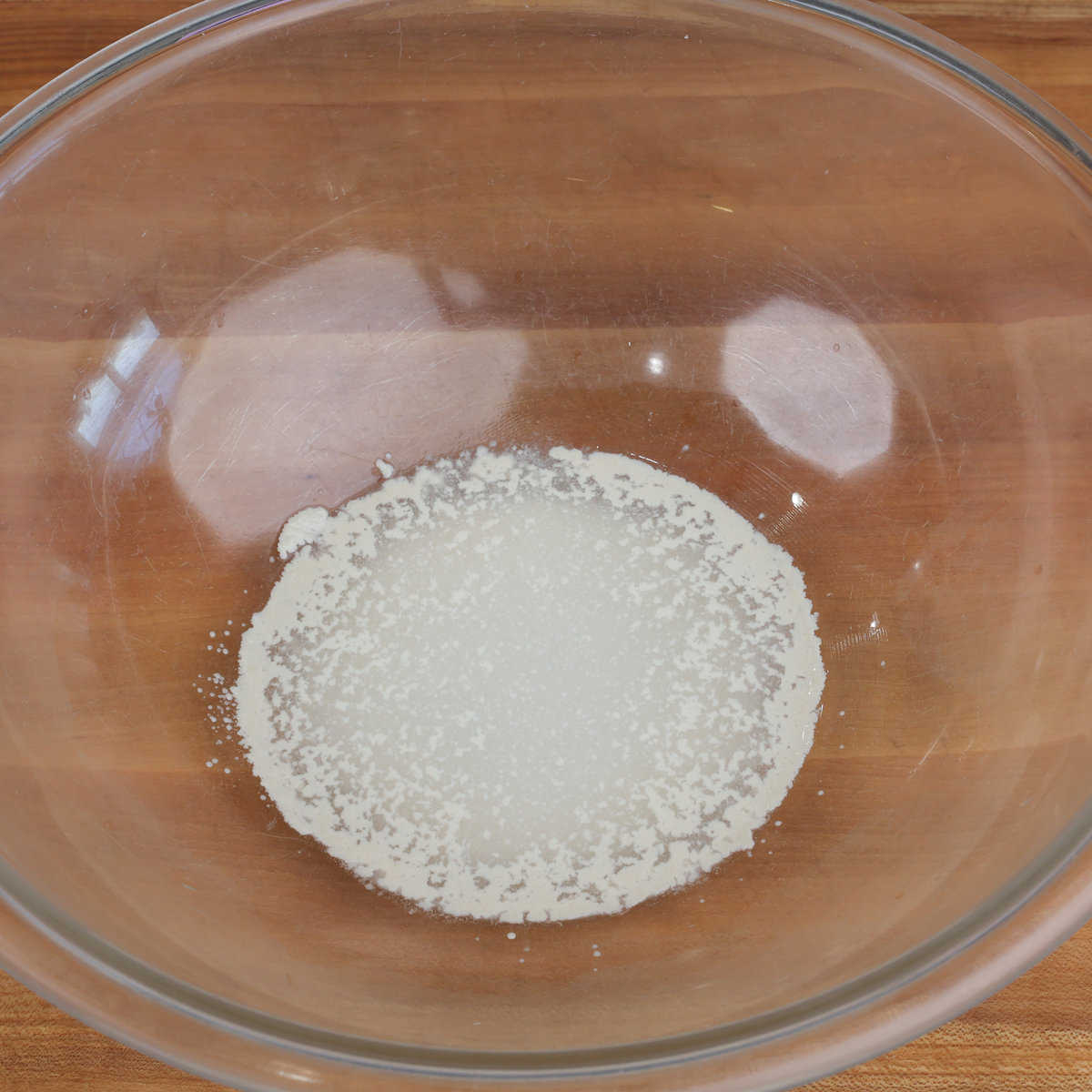
- Instant Yeast: Also called quick-rise yeast, this type doesn’t need activation and can be mixed directly with the dry ingredients.
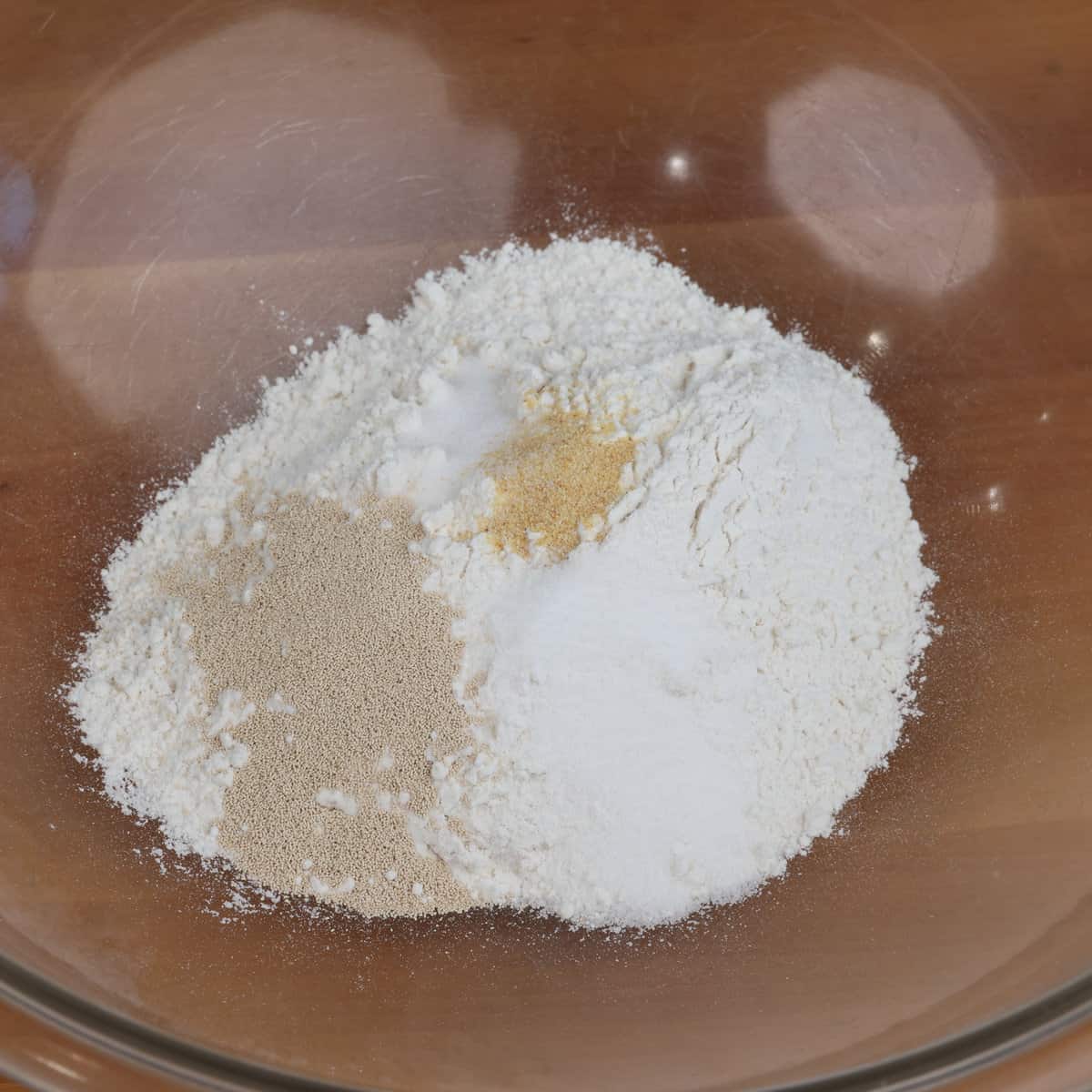
Both work wonderfully, so pick the one that fits your time and preferences!
Pizza Recipe Variations
Explore these easy and delicious ways to customize your personal pizza dough:
- Pepperoni Pizza: Spread 1/2 cup of pizza sauce, marinara, pomodoro sauce, or tomato sauce over the dough. Top with shredded mozzarella and pepperoni slices. Bake until the crust is golden and the cheese is melted.
- Classic Margherita Pizza: Layer pizza sauce, shredded mozzarella, and freshly torn basil leaves. Bake until the crust is crisp and the cheese is bubbly.
- Hawaiian Pizza: Add a layer of sauce, shredded mozzarella, diced pineapple, and 1–2 ounces of sliced or diced ham. For extra flavor, sprinkle on red pepper flakes before baking.
Accurate Flour Measurement For Pizza Dough
Accurate flour measurement is key to the success of this small batch pizza dough recipe, as well as any other baking project. Issues with texture or consistency often come down to how the flour is measured. If you’ve ever had trouble with a recipe, the first question I often ask is, “How did you measure your flour?”
While using a digital scale is the most precise method (1 cup = 138 grams for this recipe), I know many home cooks rely on measuring cups. Here’s how to ensure accuracy without a scale:
- Stir the Flour: Aerate the flour by stirring it in its container to prevent it from being too densely packed.
- Spoon and Fill: Use a spoon to gently scoop the flour into a dry measuring cup, avoiding compression.
- Level It Off: Use the flat edge of a knife to scrape off the excess, ensuring an even measurement.
This simple process helps avoid adding too much flour, which can make your dough tough or dry.
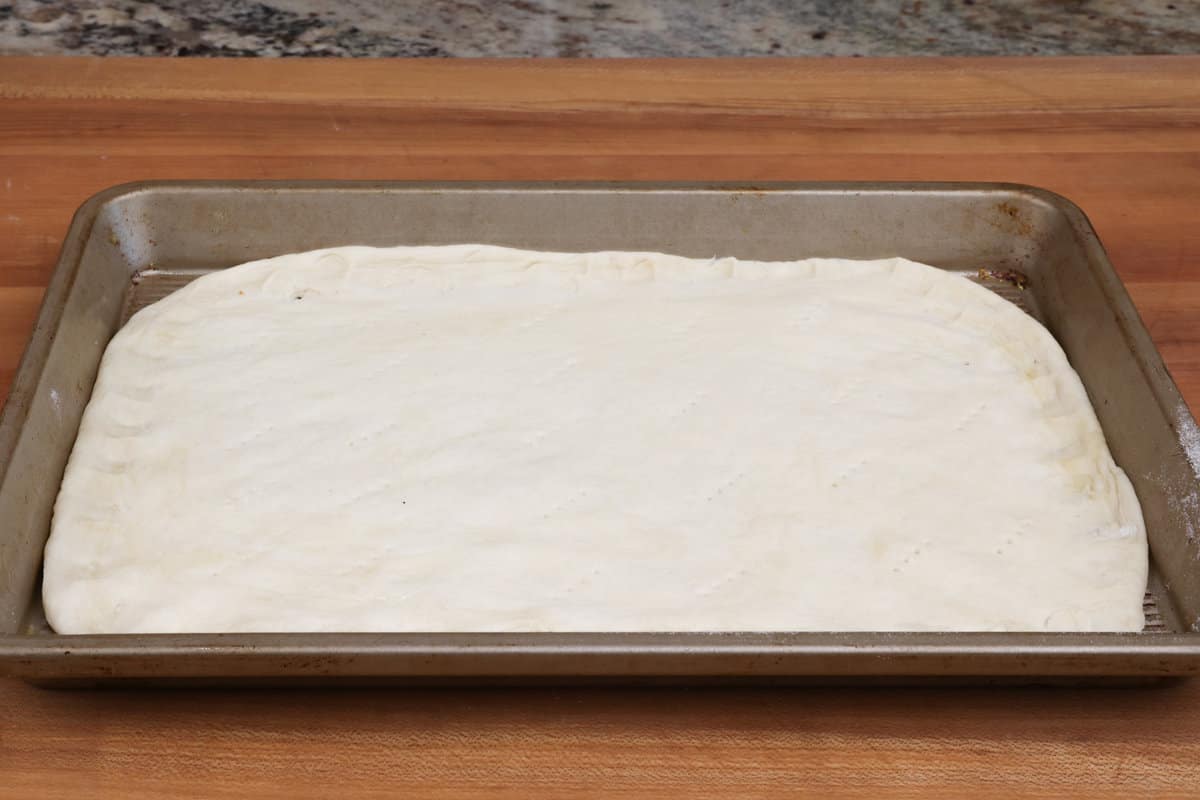
How To Make Pizza Dough
These step-by-step photos and instructions help you visualize how to make this single serve pizza dough. See the recipe box below for ingredient amounts and full recipe instructions.
Note: If you’re using instant yeast, skip the activation step and mix the flour, instant yeast, sugar, salt, and garlic powder together. Then add warm water and olive oil and proceed with the rest of the instructions.
- Warm the Water
- Pour 1/3 cup of warm water into a large bowl.
Pro Tip: Use an instant-read thermometer to check that the water is between 100-110°F. If you don’t have a thermometer, the water should feel warm, not hot, to the touch.
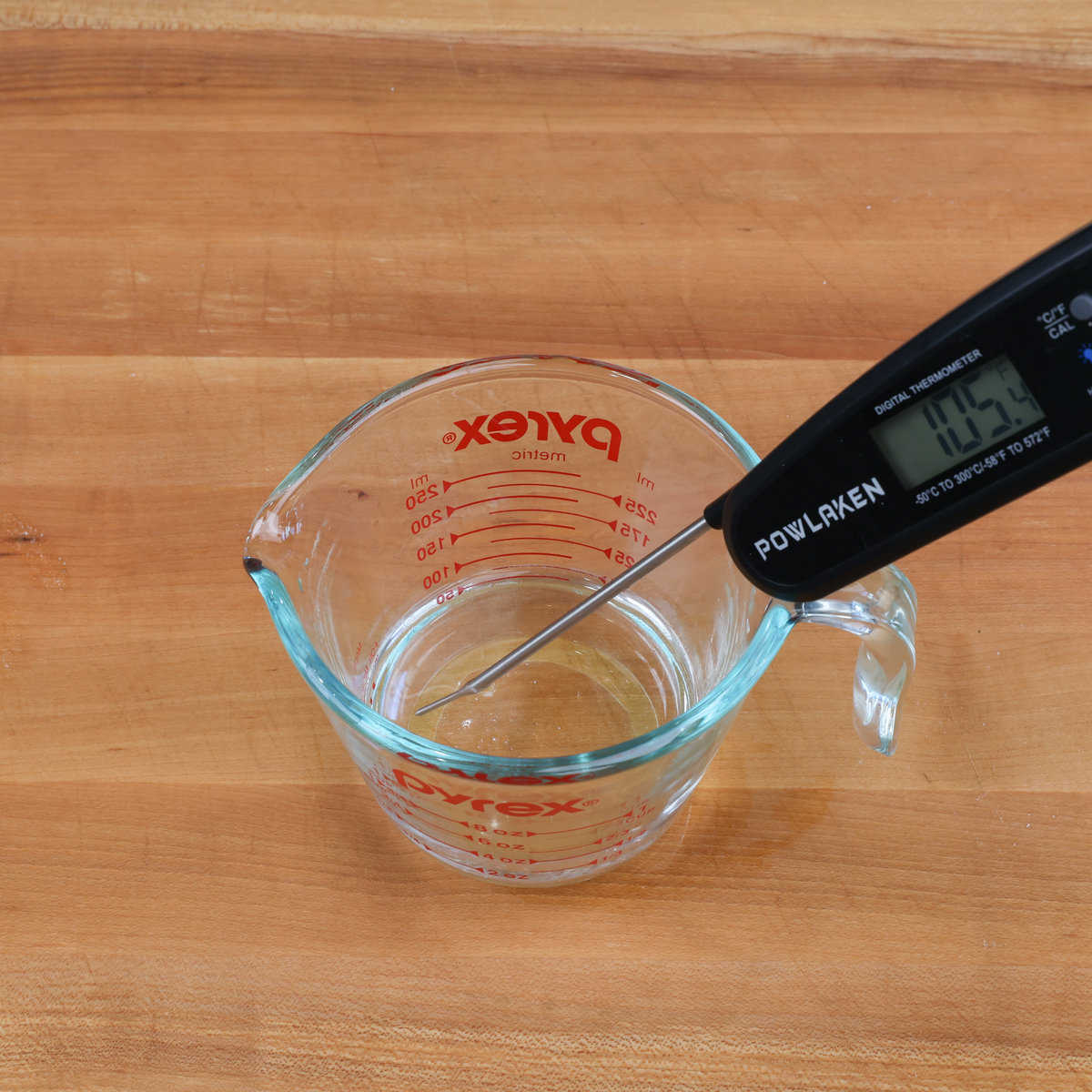
- Activate the Yeast
- Sprinkle the yeast into the water. Let it sit for about 2 minutes until bubbles form, indicating the yeast is active.

- Mix in Flavor Enhancers
- Stir in the sugar, salt, garlic powder, and olive oil until combined.
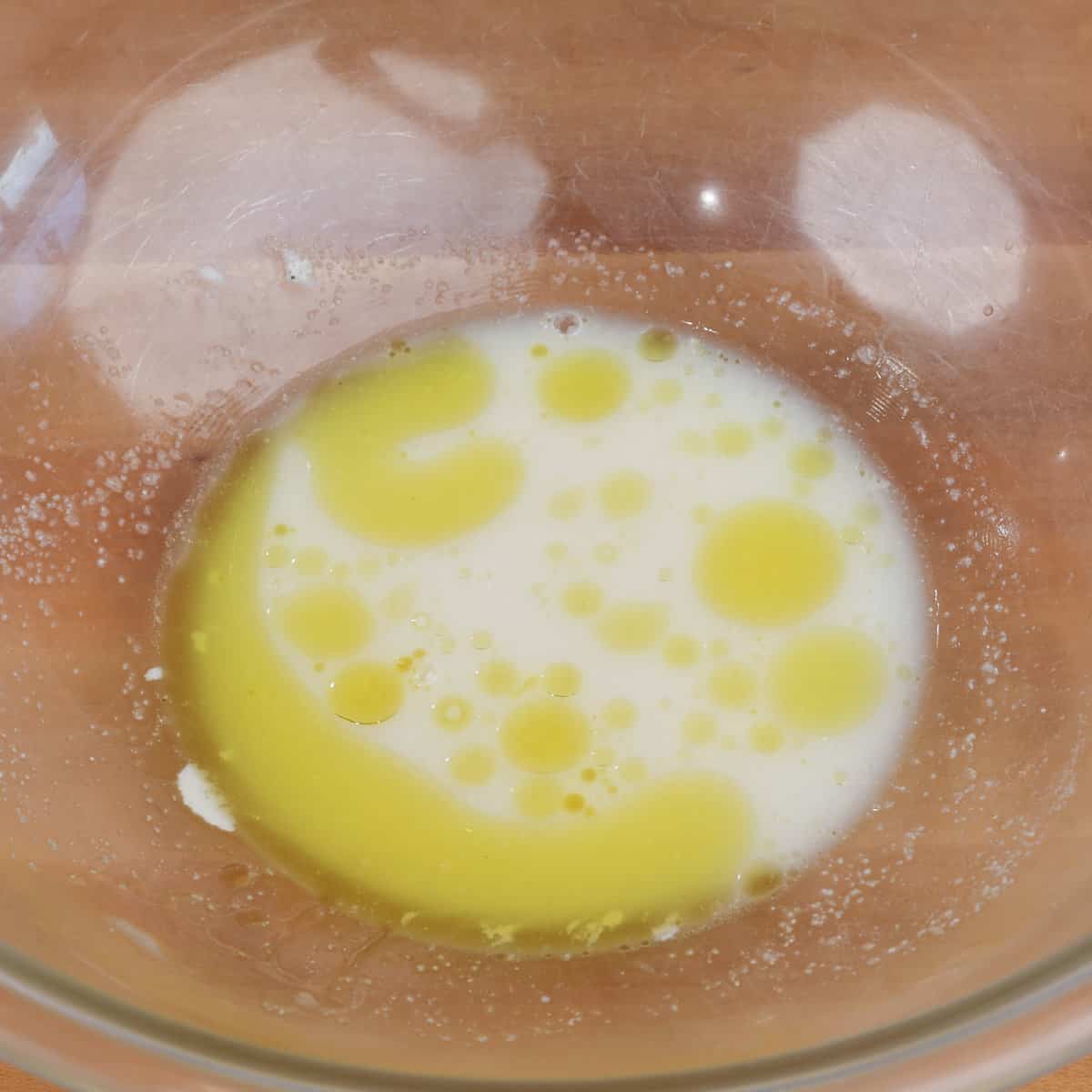
- Add the Flour
- Gradually mix in the flour until a dough starts to form. If the dough feels too sticky, add a small amount of flour.
Note: The dough may look lumpy at first but will smooth out after kneading.
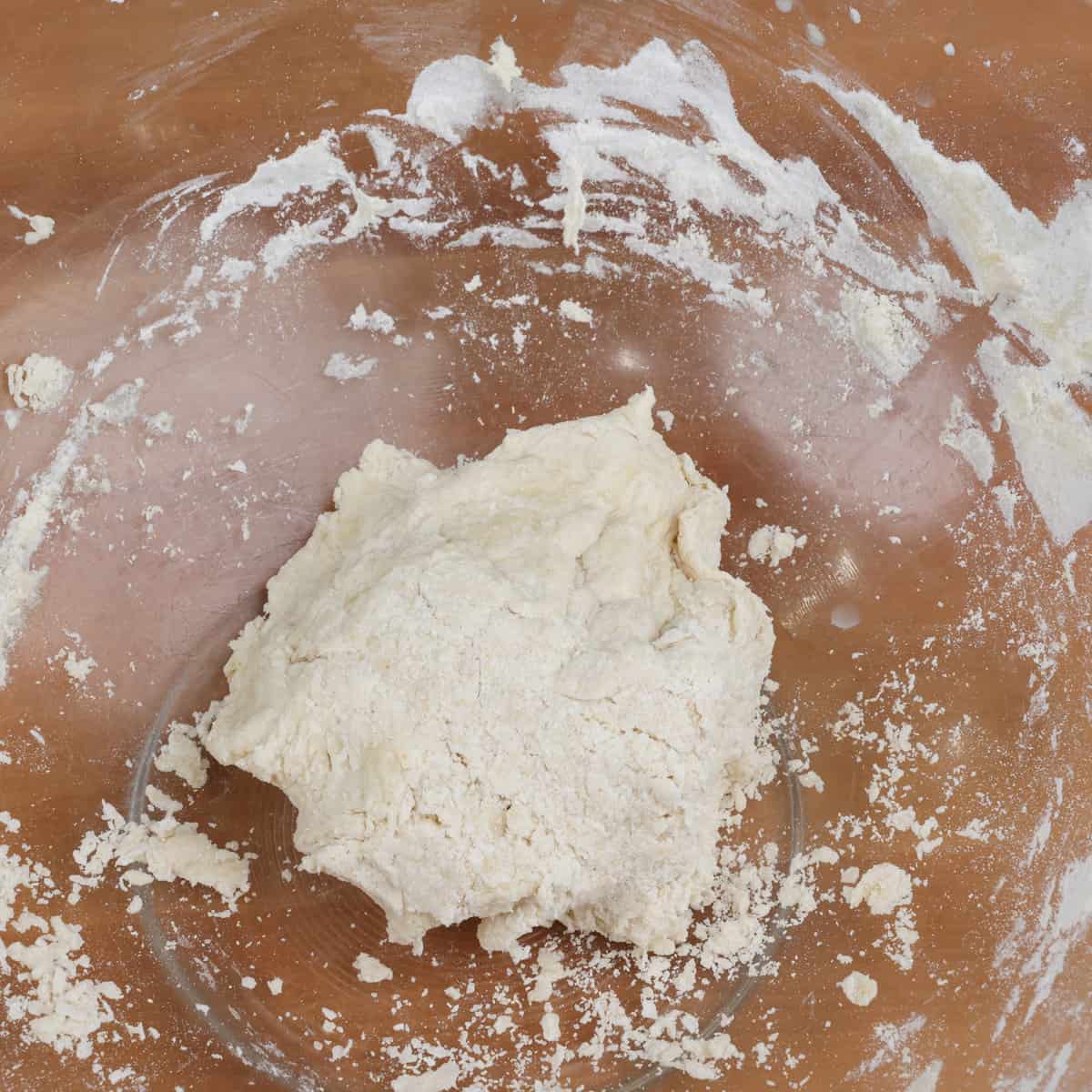
- Knead the Dough
- Transfer the dough to a lightly floured surface and knead for about 3 minutes until it’s smooth and elastic. Add flour sparingly if the dough is too sticky.
Note: Kneading develops gluten, which gives your dough its stretchy texture.
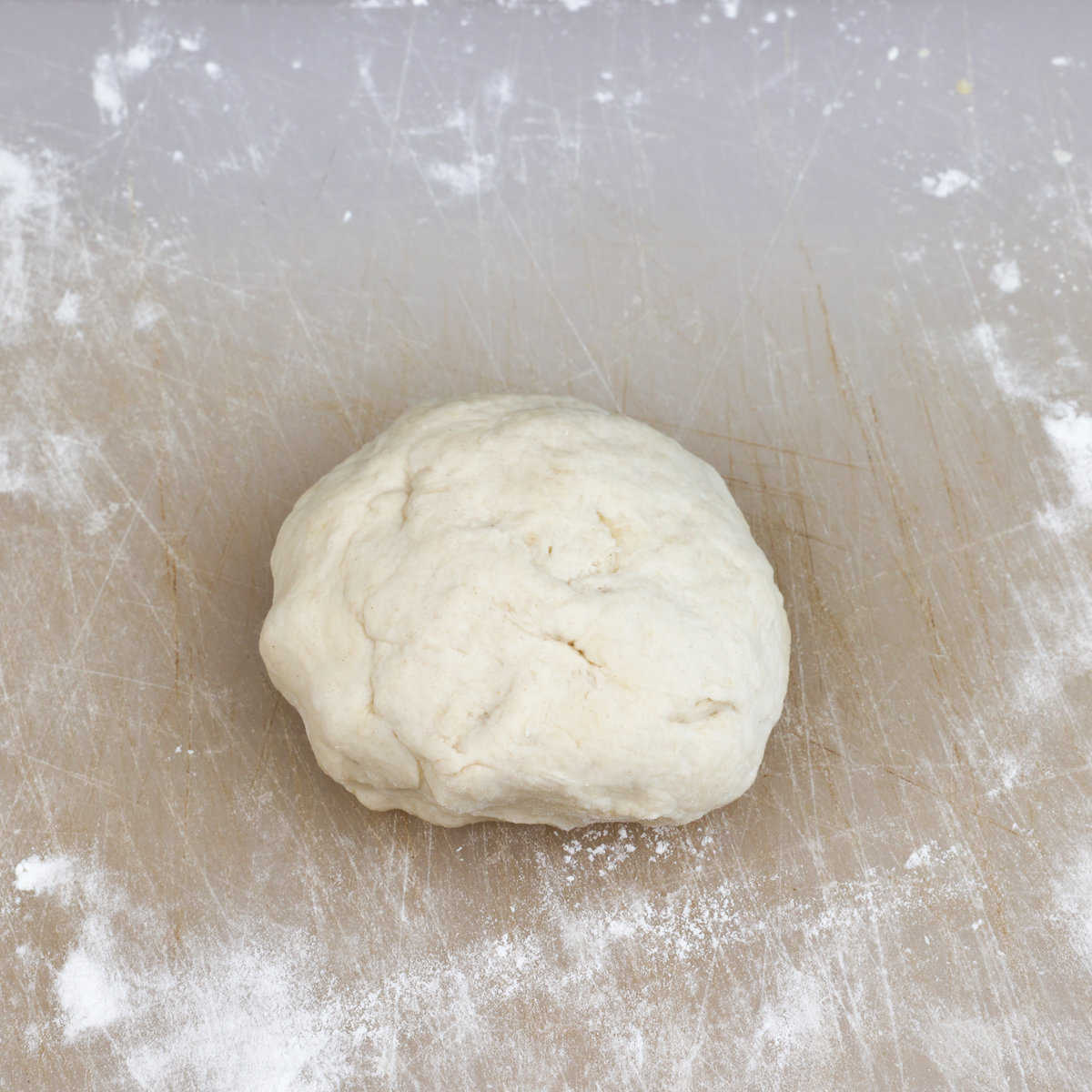
- Let it Rise
- Lightly grease a large bowl, place the dough inside, and turn it to coat with oil. Cover and let it rise in a warm, draft-free space for about 30 minutes, or until it doubles in size.
Pro Tip: For a warm spot, place the bowl in your oven with just the oven light on.
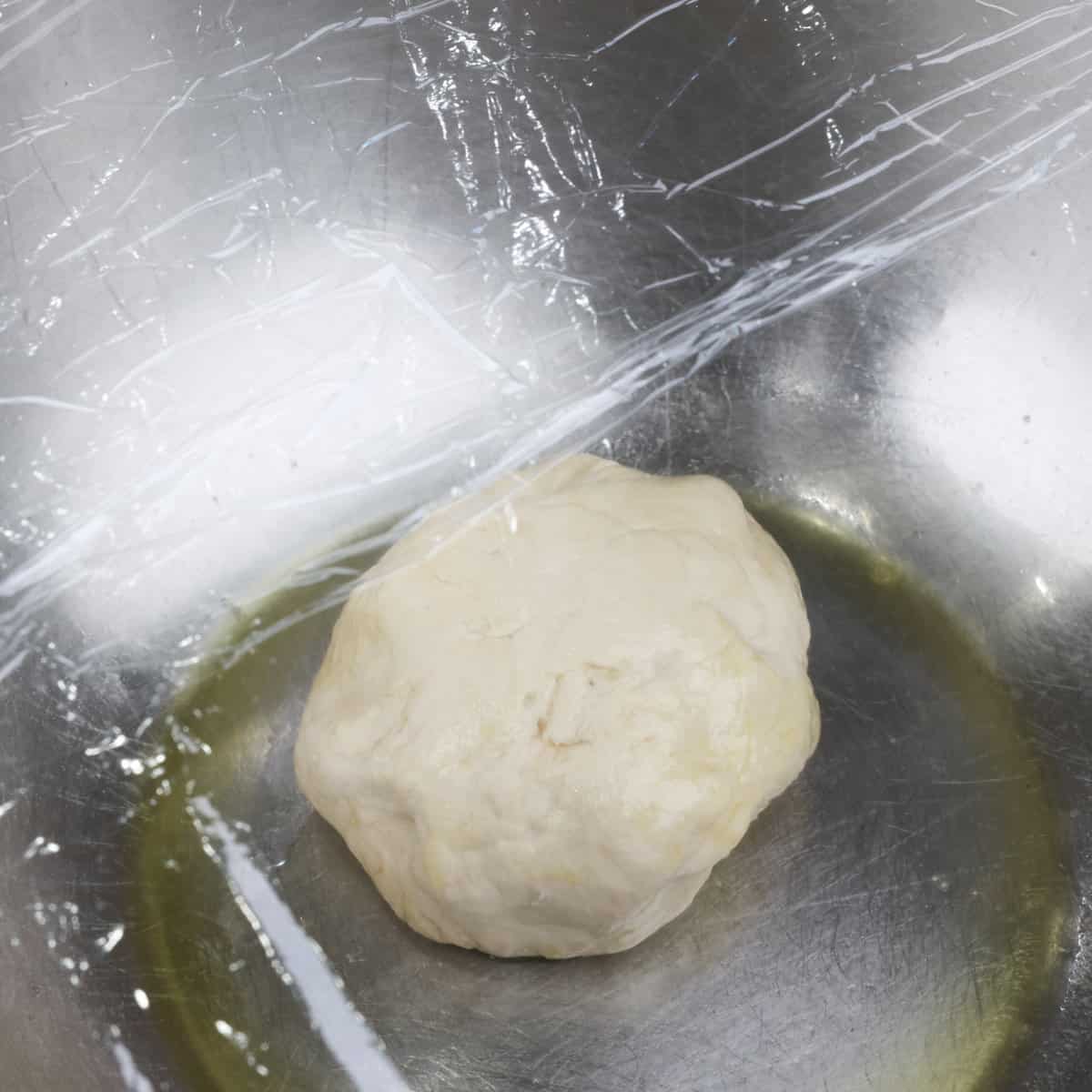
- Deflate and Shape
- Once risen, punch down the dough to release air. Transfer it to a floured surface and shape it into a circle or press it into a greased small 9×13-inch quarter-sheet pan.
Pro Tip: If the dough resists shaping, let it rest under a kitchen towel for 10 minutes before continuing.
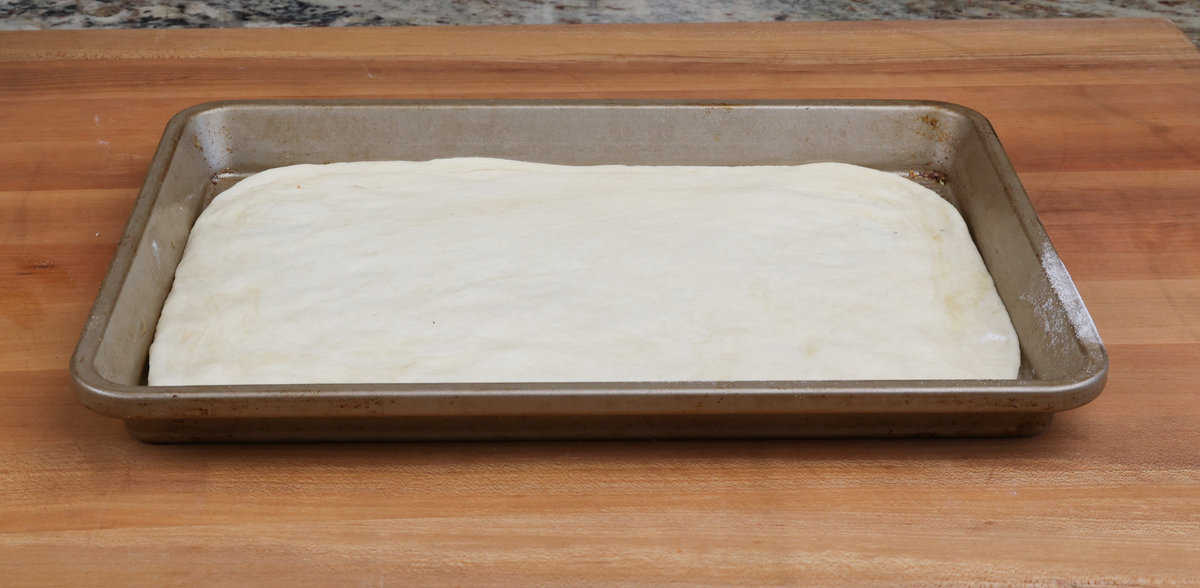
- Form the Crust
- Pinch or fold the edges to create a crust.
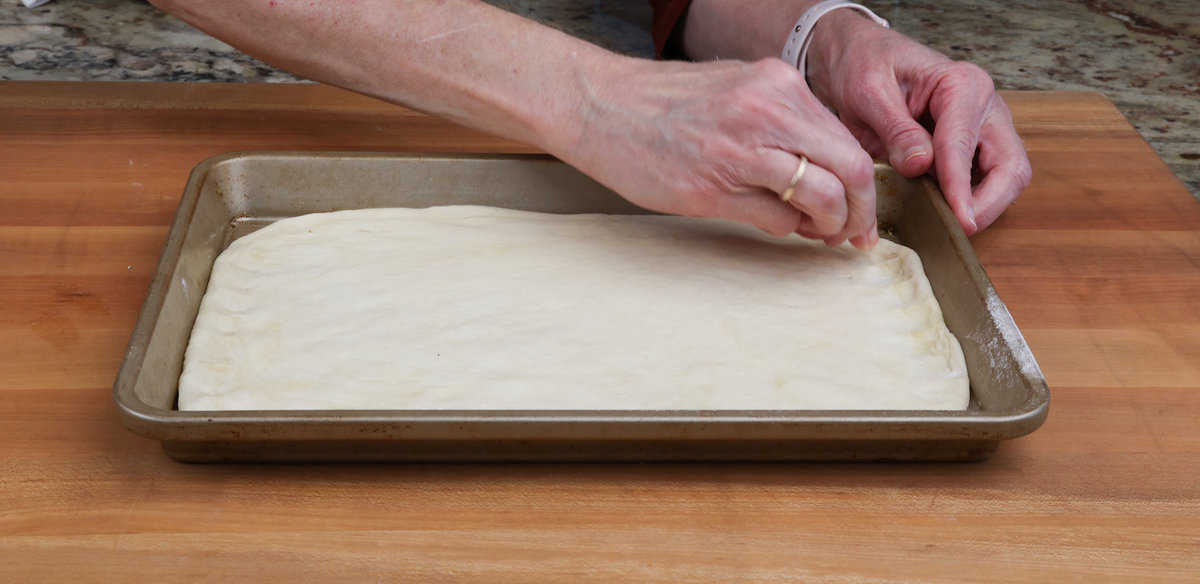
- Prevent Bubbles
- Use a fork to gently prick the surface of the dough to prevent air bubbles from forming during baking.
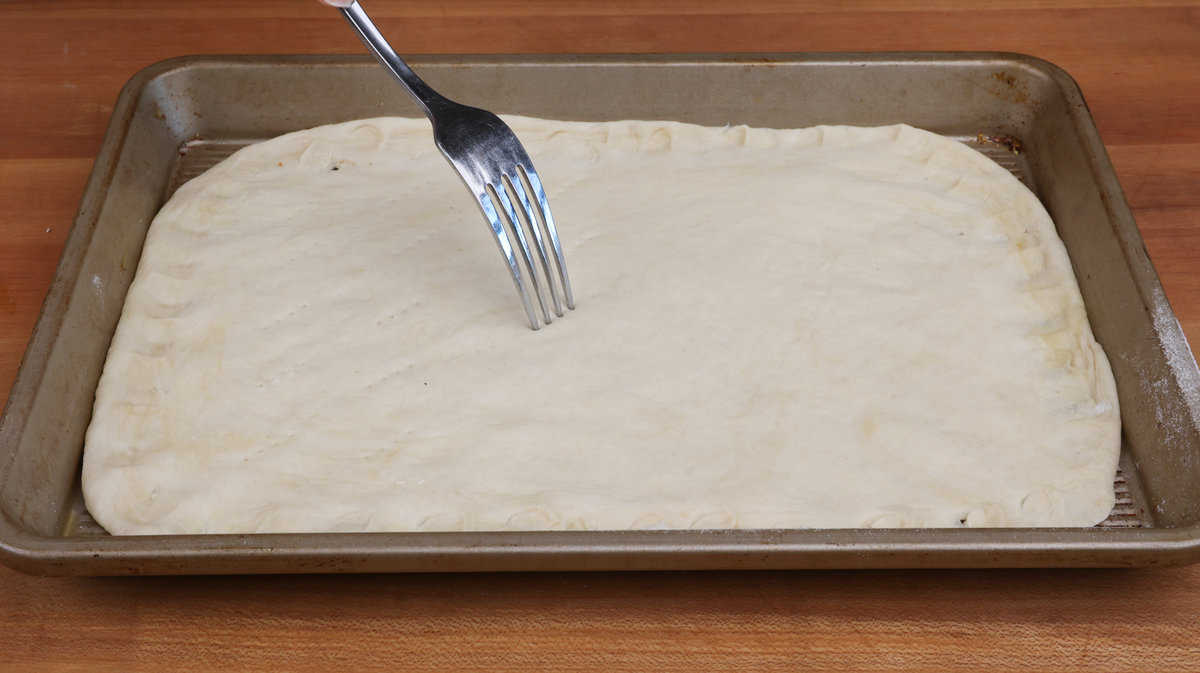
- Add Toppings and Bake
- Brush the crust with olive oil, then add your favorite sauce and toppings. Bake in a preheated oven at 400°F for 18-20 minutes, or until the cheese is melted and the crust is golden brown.
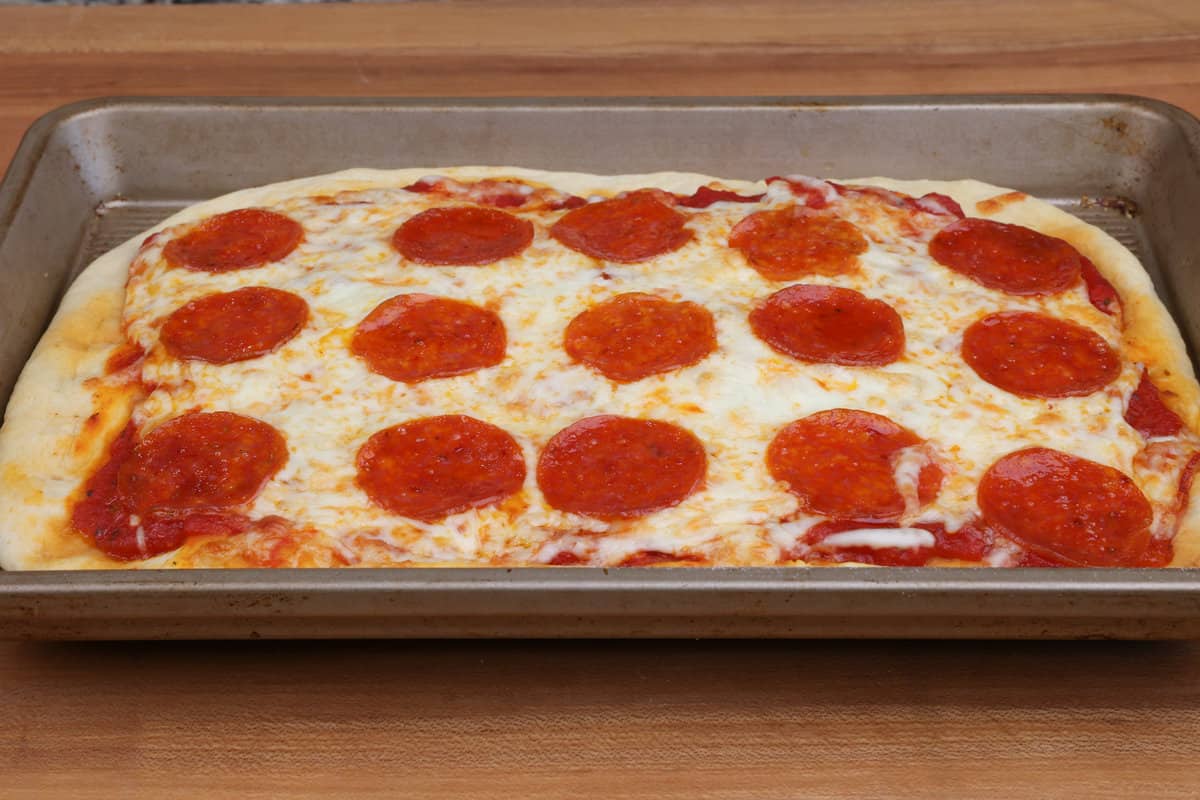
This recipe yields enough dough for one 12-inch round thin-crust pizza or one 9×13-inch thin-crust rectangular pizza.
Expert Tips
- Check Yeast Activity: Ensure your yeast is active by dissolving it in warm water and looking for bubbles. No bubbles? Use a fresh packet.
- Bake and Freeze for Later: Want to prep ahead? Bake your pizza crust, let it cool completely, then wrap it tightly in plastic wrap and freeze. When ready to enjoy, thaw the crust as the oven preheats, add toppings, and bake for about 15 minutes.
- Prevent Soggy Crust: Stick with toppings you love, but watch out for ingredients that release too much moisture, like wet olives, marinated vegetables, or excess sauce. These can make your crust soggy. For the best results, pat wet toppings dry and keep sauce layers thin to preserve the perfect crispness.
How To Store Leftover Pizza
To keep leftover pizza fresh, wrap each slice tightly in plastic wrap. Place the wrapped slices in the refrigerator, where they will stay fresh for up to 4 days.
How to Reheat Leftover Pizza
- Oven Method: Preheat your oven to 350°F (175°C). Place the pizza slices on a baking sheet and bake for about 10 minutes, or until the cheese is melted and the crust is warm and crispy.
- Stovetop Method: Heat a skillet over medium heat. Place the pizza slice in the skillet, cover it with a lid, and cook for a few minutes until heated through. This keeps the crust crisp while warming the toppings.
- Microwave Method: Place a slice on a microwave-safe plate with a small cup of water beside it to prevent the crust from becoming rubbery. Microwave in 15-second intervals until warm.
Freezing Leftover Pizza
If you won’t eat the leftovers within a few days:
- Wrap each slice tightly in plastic wrap, then aluminum foil, or place in a freezer-safe bag to prevent freezer burn.
- Store in the freezer for up to 2 months.
- To reheat, thaw the pizza in the fridge overnight and use one of the reheating methods above.
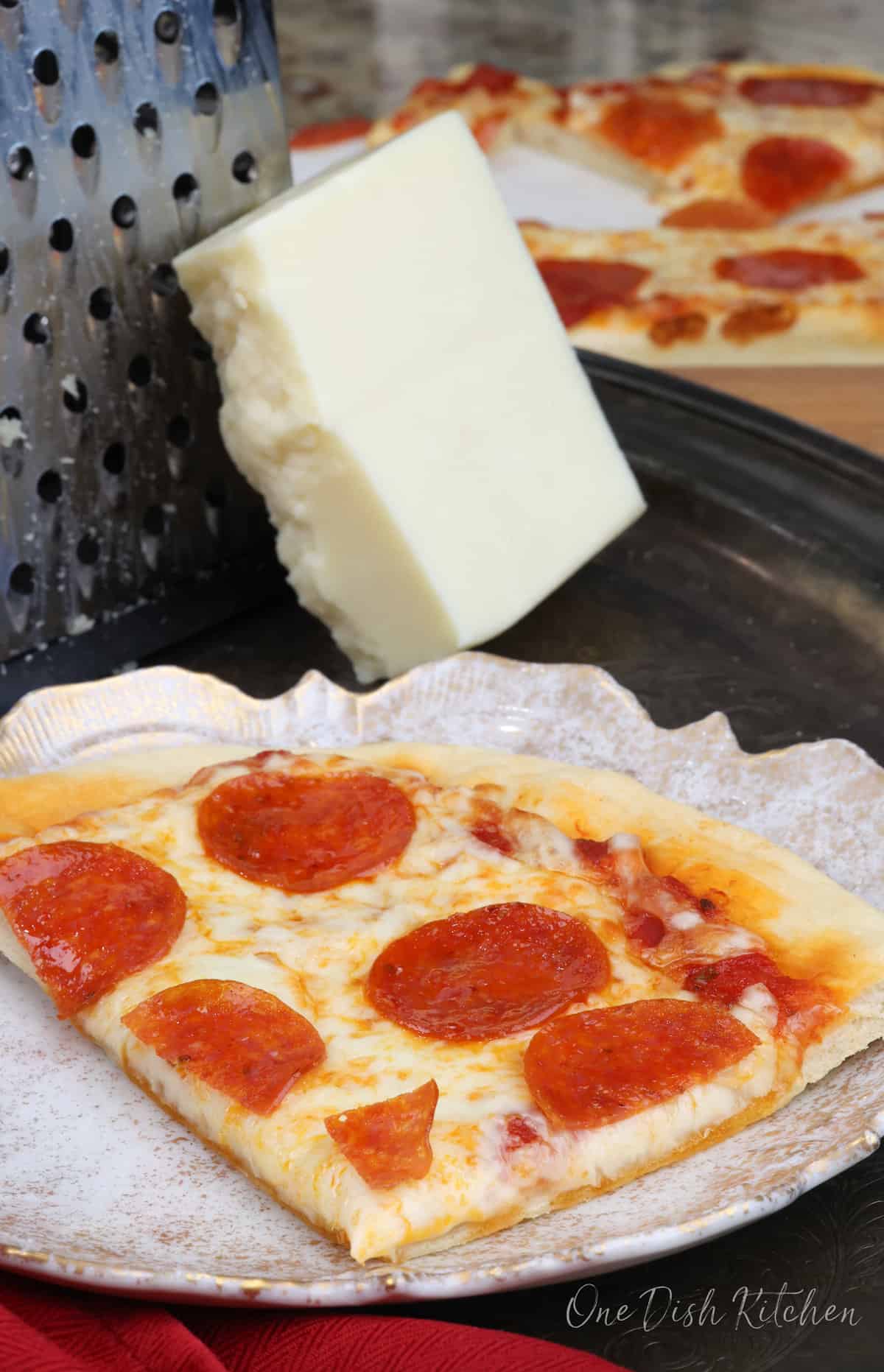
Frequently Asked Questions
Yes, you can! Prepare the dough, shape it into a ball, and lightly coat it with olive oil. Place the dough in a covered bowl and refrigerate for up to 3 days. When you’re ready to use it, let the dough sit at room temperature for about 30 minutes. Punch it down and allow it to rest, covered, for another 20 minutes before shaping and adding toppings.
Once the dough is ready, spread your favorite pizza sauce over the crust, add your desired toppings, and bake in a preheated oven at 400°F for 15-20 minutes. If you’re adding many toppings, you may need to extend the baking time slightly.
Absolutely! For added flavor, try mixing 1/8 teaspoon of garlic powder or dried basil into the dough. You could also experiment with dried oregano or a pinch of red pepper flakes for a spicy kick.
Yes, pizza dough freezes well. After letting the dough rise, shape it into a ball and coat it lightly with olive oil. Place it on a sheet pan lined with plastic wrap or parchment paper, then freeze for about 2 hours. Once frozen, transfer the dough to a plastic bag, removing as much air as possible. The dough can be stored in the freezer for up to 3 months. When ready to use, thaw it overnight in the refrigerator, then let it come to room temperature before shaping.
While bread flour is often recommended for its chewiness, I use all-purpose flour for this recipe because it’s versatile and readily available. This makes the recipe approachable and convenient for most home kitchens.
Yes, you can easily double the ingredient quantities to make dough for two pizzas. Follow the same steps for mixing, kneading, and rising.
If your pizza dough didn’t rise, there could be a few reasons. First, check the yeast—it might be expired or inactive. Another possibility is that the water you used was either too hot (which can kill the yeast) or too cold (which won’t activate it properly). Lastly, the environment where the dough is rising might be too cold. Dough rises best in a warm, draft-free area. If your room is chilly, try placing the dough in a slightly warmed (but turned off) oven or near a warm spot like the top of your refrigerator.
Ways To Use Leftover Ingredients
If you have any ingredients leftover from this recipe, check out our Leftover Ingredients Recipe Finder or you might like to consider using them in any of these single serving and small batch recipes:
If you’ve made this pizza dough for one or any other recipe from One Dish Kitchen, I’d love to hear your thoughts! Please rate the recipe and share your feedback in the comments below.
If you take a picture please tag us on Instagram (@onedishkitchen) we’d love to see it!
Personal Pizza Dough

Ingredients
- ⅓ cup warm water (between 100-110°F)
- 1 teaspoon active dry yeast * see notes below if using instant yeast
- ½ teaspoon sugar
- ¼ teaspoon salt
- ¼ teaspoon garlic powder
- 1 tablespoon olive oil -plus 1-2 teaspoons more for greasing the bowl and brushing over the top of the pizza dough before baking
- 1 cup all-purpose flour
Instructions
- Pour 1/3 cup of warm water into a large bowl.Pro Tip: Use an instant-read thermometer to check that the water is between 100-110°F. If you don’t have a thermometer, the water should feel warm, not hot, to the touch.
- Sprinkle the yeast into the water. Let it sit for about 2 minutes until bubbles form, indicating the yeast is active.
- Stir in the sugar, salt, garlic powder, and olive oil until combined.
- Gradually mix in the flour until a dough starts to form. If the dough feels too sticky, add a small amount of flour.Note: The dough may look lumpy at first but will smooth out after kneading.
- Transfer the dough to a lightly floured surface and knead for about 3 minutes until it’s smooth and elastic. Add flour sparingly if the dough is too sticky.
- Lightly grease a large bowl, place the dough inside, and turn it to coat with oil. Cover and let it rise in a warm, draft-free space for about 30 minutes, or until it doubles in size.Pro Tip: For a warm spot, place the bowl in your oven with just the oven light on.
- Once risen, punch down the dough to release air. Transfer it to a floured surface and shape it into a circle or press it into a greased small rectangular pan.Pro Tip: If the dough resists shaping, let it rest under a kitchen towel for 10 minutes before continuing.
- Pinch or fold the edges to create a crust.
- Use a fork to gently prick the surface of the dough to prevent air bubbles from forming during baking.
- Brush the crust with olive oil, then add your favorite sauce and toppings. Bake in a preheated oven at 400°F for 18-20 minutes, or until the cheese is melted and the crust is golden brown.This recipe yields enough dough for one 12-inch round thin-crust pizza or one 9×13-inch thin-crust rectangular pizza.
Notes
- Check Yeast Activity: Ensure your yeast is active by dissolving it in warm water and looking for bubbles. No bubbles? Use a fresh packet.
- Bake and Freeze for Later: Want to prep ahead? Bake your pizza crust, let it cool completely, then wrap it tightly in plastic wrap and freeze. When ready to enjoy, thaw the crust as the oven preheats, add toppings, and bake for about 15 minutes.
- Prevent Soggy Crust: Stick with toppings you love, but watch out for ingredients that release too much moisture, like wet olives, marinated vegetables, or excess sauce. These can make your crust soggy. For the best results, pat wet toppings dry and keep sauce layers thin to preserve the perfect crispness.
- Combine the flour, instant yeast, sugar, salt, and garlic powder in a large mixing bowl.
- Stir in the warm water and olive oil until the mixture comes together.
- Proceed with the rest of the recipe as directed.
Nutrition
The information shown is an estimate provided by an online nutrition calculator. It should not be considered a substitute for a professional nutritionist’s advice.
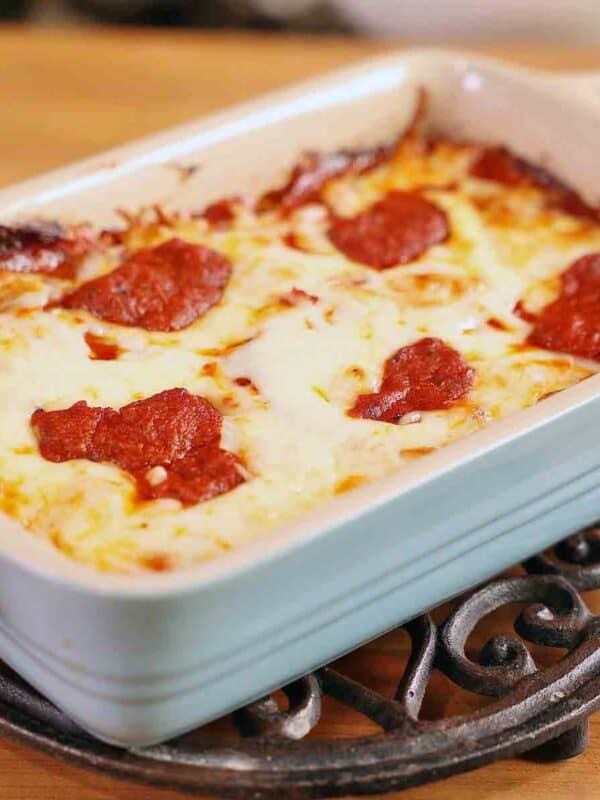
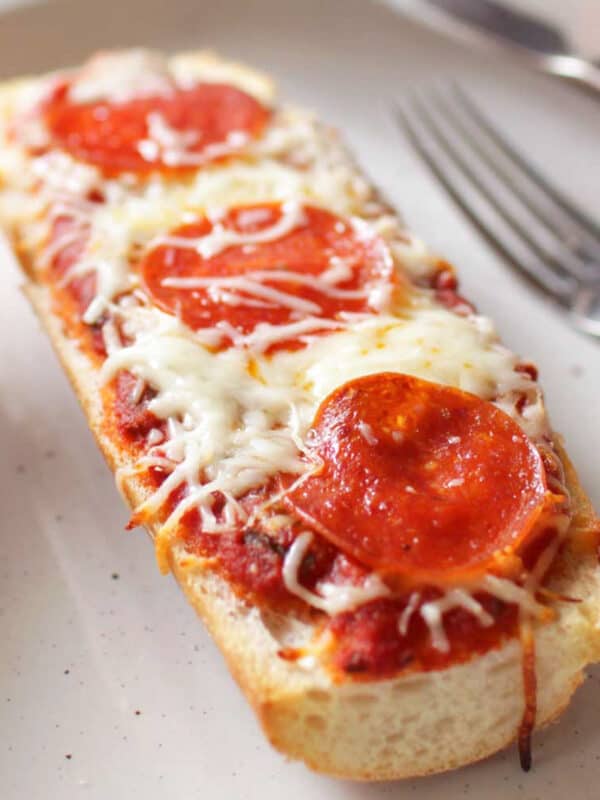
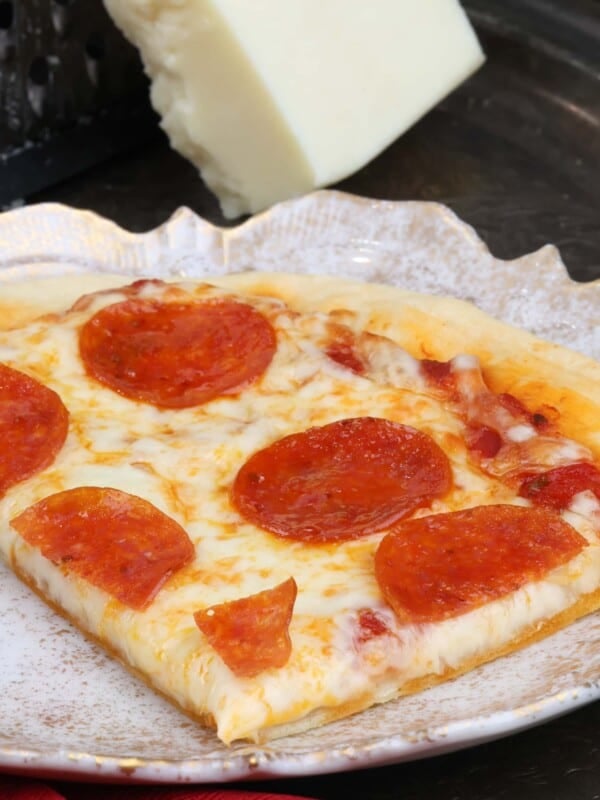

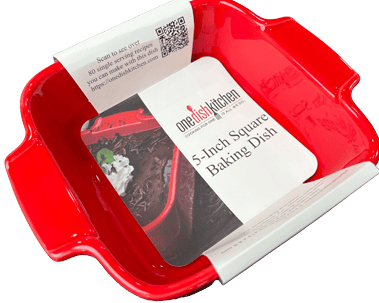











Can I make this for the day before?
Absolutely. Create your pizza dough, shape it into a ball, and lightly coat it with olive oil. Place the dough in a covered bowl and refrigerate for up to three days. When you’re ready to use it, let the dough reach room temperature—this usually takes around 30 minutes. Punch it down and allow it to rest, covered, for an additional 20 minutes. Then, it’s ready to be shaped and topped. For other make ahead tips, see the FAQ section in the recipe post.
What a very easy personal size pizza dough recipe. Easy to follow directions and recipe. This one’s a keeper! 😃 👍
Can this recipe be adapted to be gluten free?
Yes, you can adapt this pizza dough recipe to be gluten-free! We’ve successfully used a gluten-free 1:1 flour blend as a substitute.
Looks and sounds delicious! I am looking to make this dough for a kids cooking class. Unfortunately we don’t have enough time in the same day to make the whole pizza. We are planning to start our dough and make our sauce. Can we freeze the dough before baking it? Wondering if we need to let it rise before freezing it.
Hi Kristin, what a fun class! Yes, the dough can be frozen. After letting your prepared dough rise, shape it into a ball and coat it with a small amount of olive oil. Freeze it on a sheet pan lined with plastic wrap or parchment paper for roughly 2 hours. Transfer the frozen dough into a plastic bag, removing as much air as possible before sealing. Your frozen pizza dough can be stored for up to 3 months. To use, thaw it overnight in the bag, and then let it come to room temperature.
Be sure to check out the FAQ section to see other answers to questions you might find helpful.